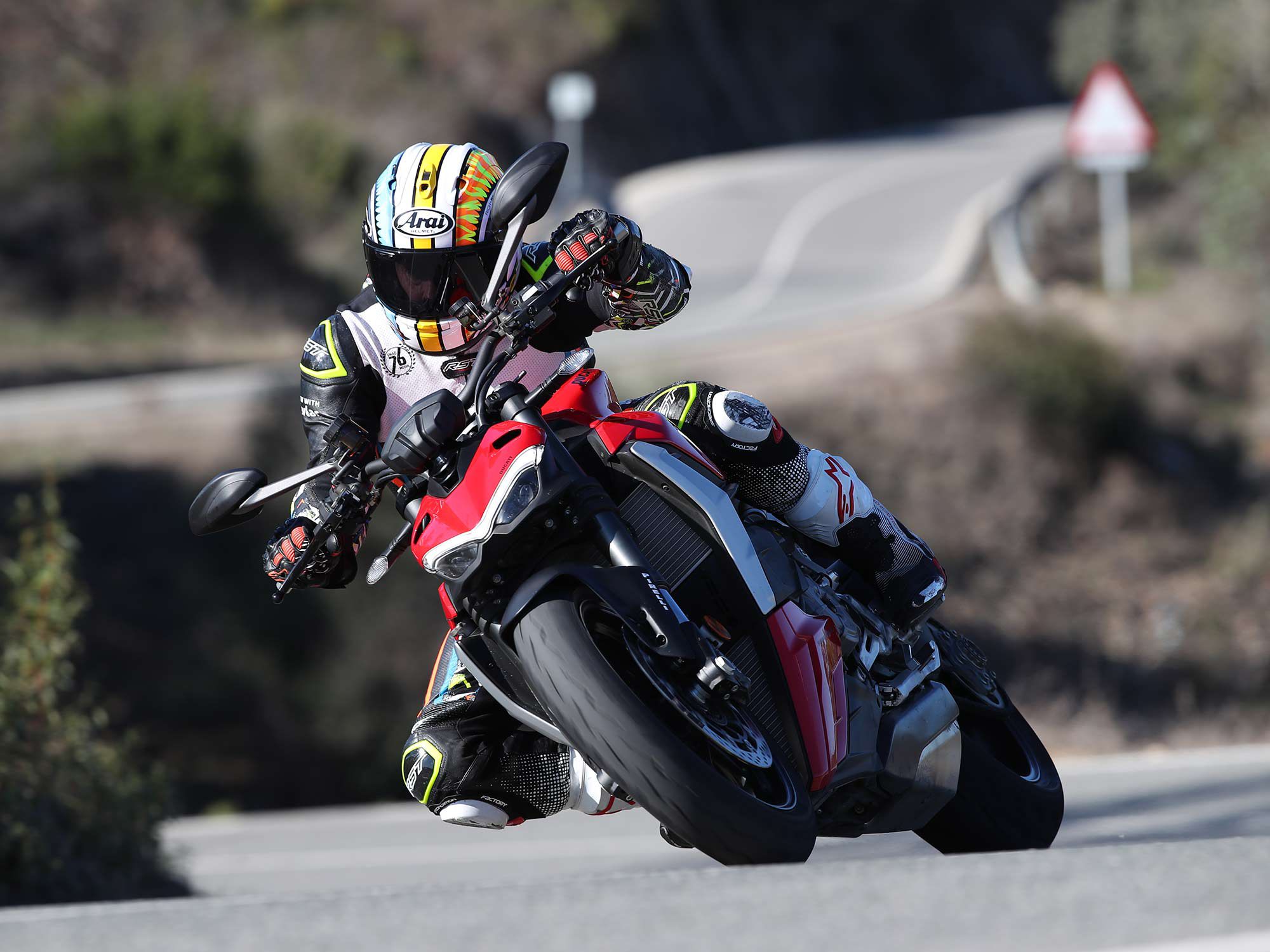
Converting superfocused sportbikes into performance naked bikes is a trick Ducati has successfully performed many times. Now, for 2022, the Bologna factory has extended its Streetfighter range by transforming the Panigale V2 into the Streetfighter V2, an introduction, as it describes it, to the Streetfighter brand.
Introduction maybe, but this is certainly no entry-level streetbike; how can it be when the 153 hp V2 is heavily based on the race-ready Panigale V2. It has the same engine, similar (fully adjustable) suspension, and similar excellent electronics—plus a deeper and softer seat, lower pegs, and higher, wider bars.
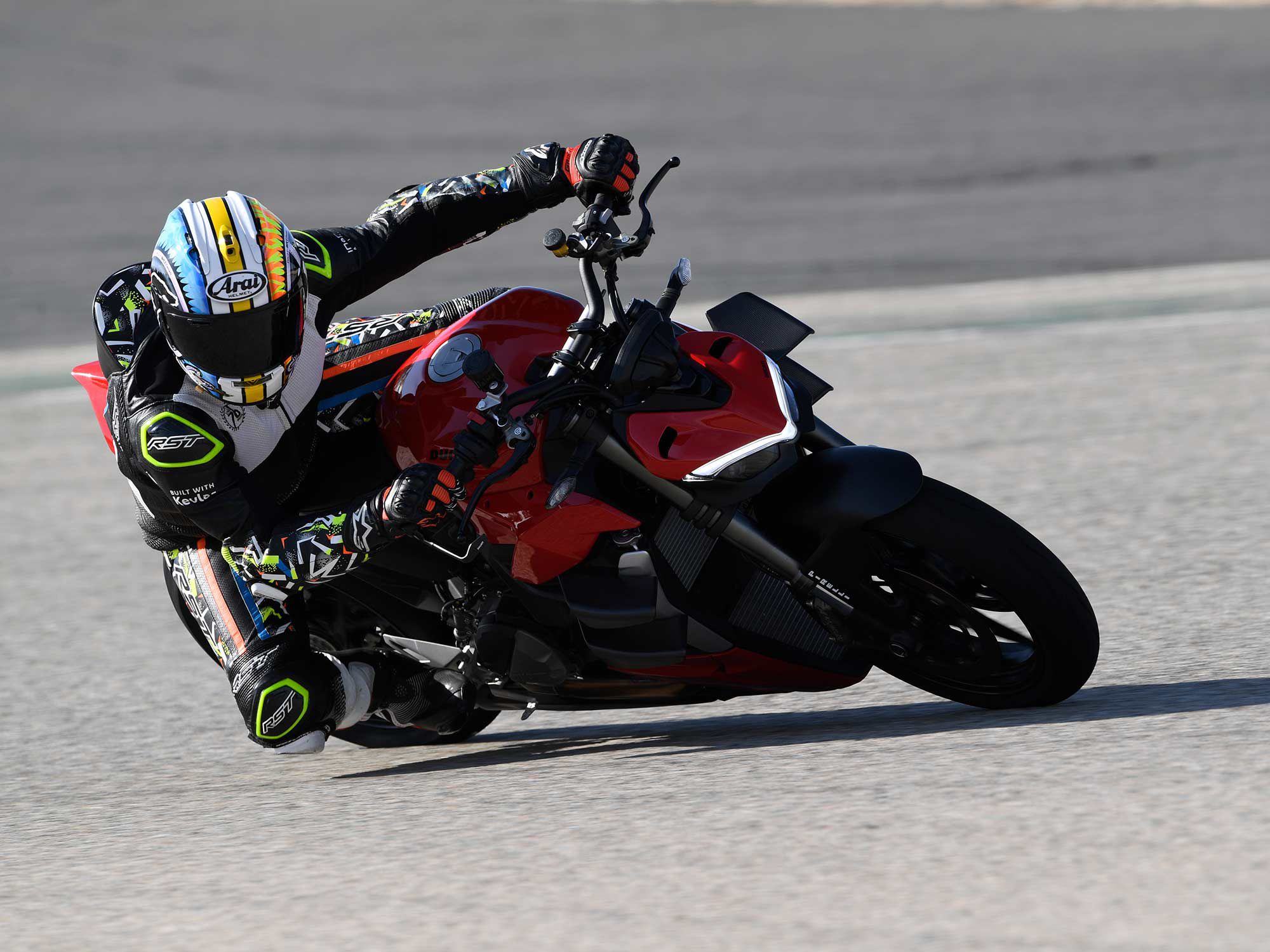
In theory, this naked version should be easier to manage and more comfortable than the Panigale V2, while remaining a gas to ride briskly on both road and track. To find out, we embarked on a full day of testing in southern Spain.
On the road, steering is nimble and fluid. It’s rewarding to sit tight in the Streetfighter’s comfortable saddle and simply point and steer with minimal energy. A high and wide bar, generous riding position and the lack of bulk from this 392-pound naked all contribute to a bike that is easy to manage—and relish on demanding roads.
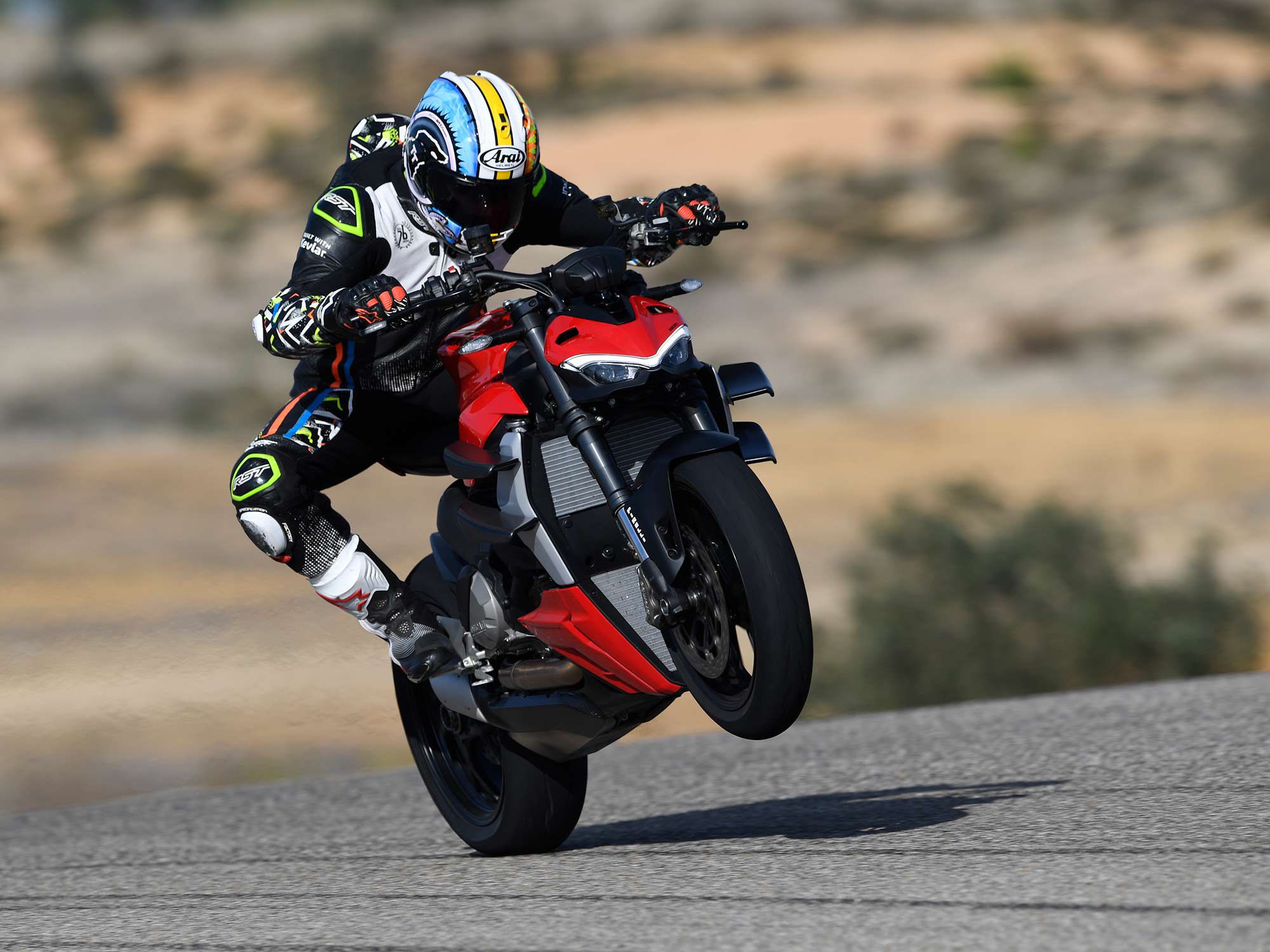
Even when I upped the pace, it was difficult to criticize the new Streetfighter. The suspension remained pliant yet absorbed the jagged edges of my aggressive riding without any loss of control. Feedback from the Pirelli Diablo Rosso IV rubber was forensic, ground clearance wasn’t an issue, and at no time did I feel the need to fiddle with the suspension’s damping adjusters.
For the track element of the test, we tickled the suspension, adding a little compression and rebound damping at both ends, plus 0.16 inch spring preload height front and rear to give the chassis more support and, given that the V2 ‘Fighter has lower pegs than the Panigale V2, increase ground clearance. Despite using the same road-focused rubber the Streetfighter continued to impress. Steering remained precise and sharp; only my toe sliders touched down on the odd occasion; and that confidence-inspiring Panigale-feel from the chassis remained fully intact.
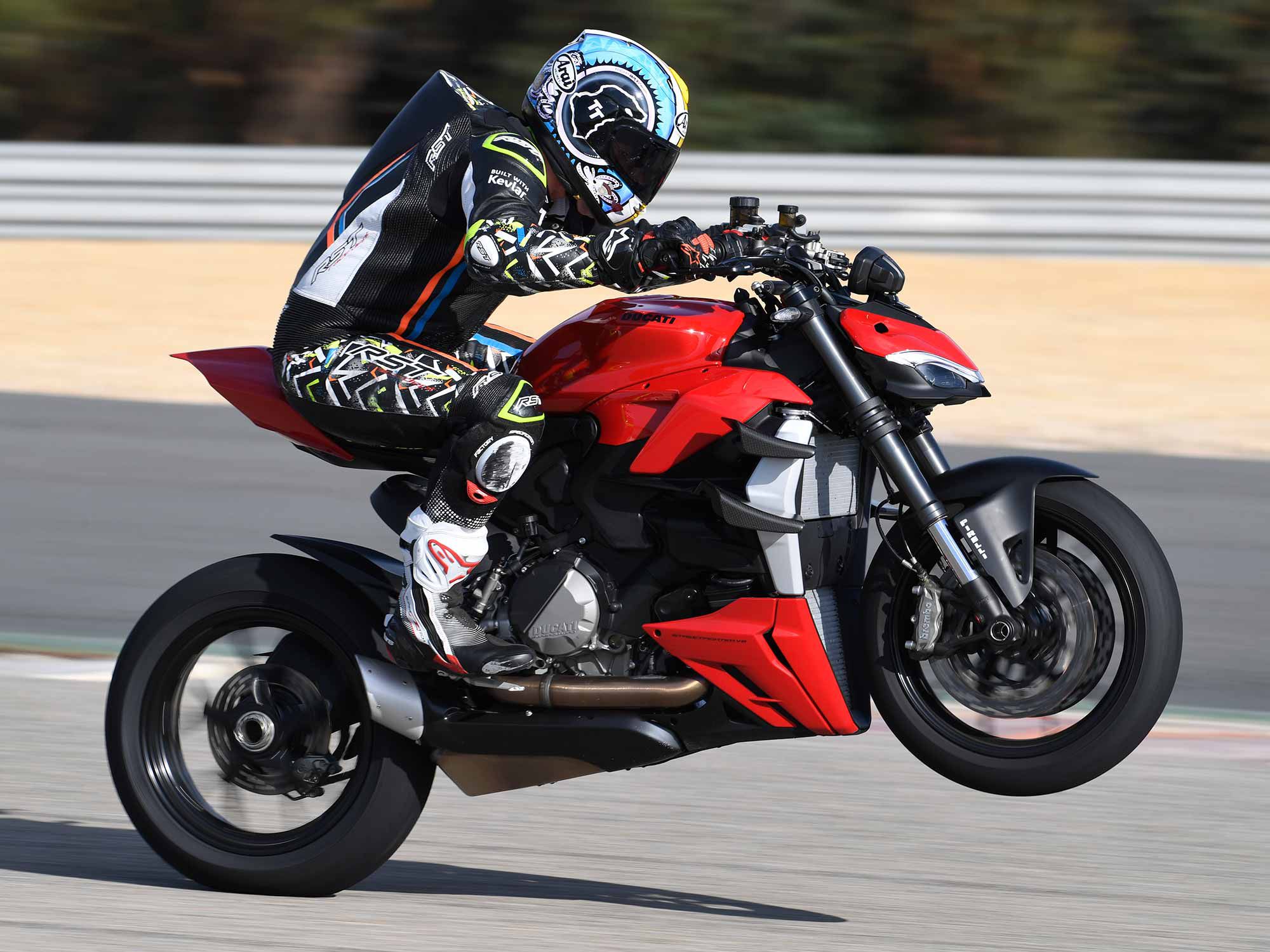
As the pace increased to race speeds, however, the Diablo IVs reached their limit. Releasing the powerful Brembo stoppers at the corner apex would push and unsettle the front, but there was so much feedback a potentially scary moment felt strangely calm and unalarming.
With the rear equally predictable, allowing me to feel the movement as its limit approached, I relished riding the Streetfighter V2 on track, perhaps even more so than its big brother Streetfighter V4. The limitations were not the chassis, but the low grip level of the slippery track and the road-biased Pirellis, which were asked to work far outside their design parameters.
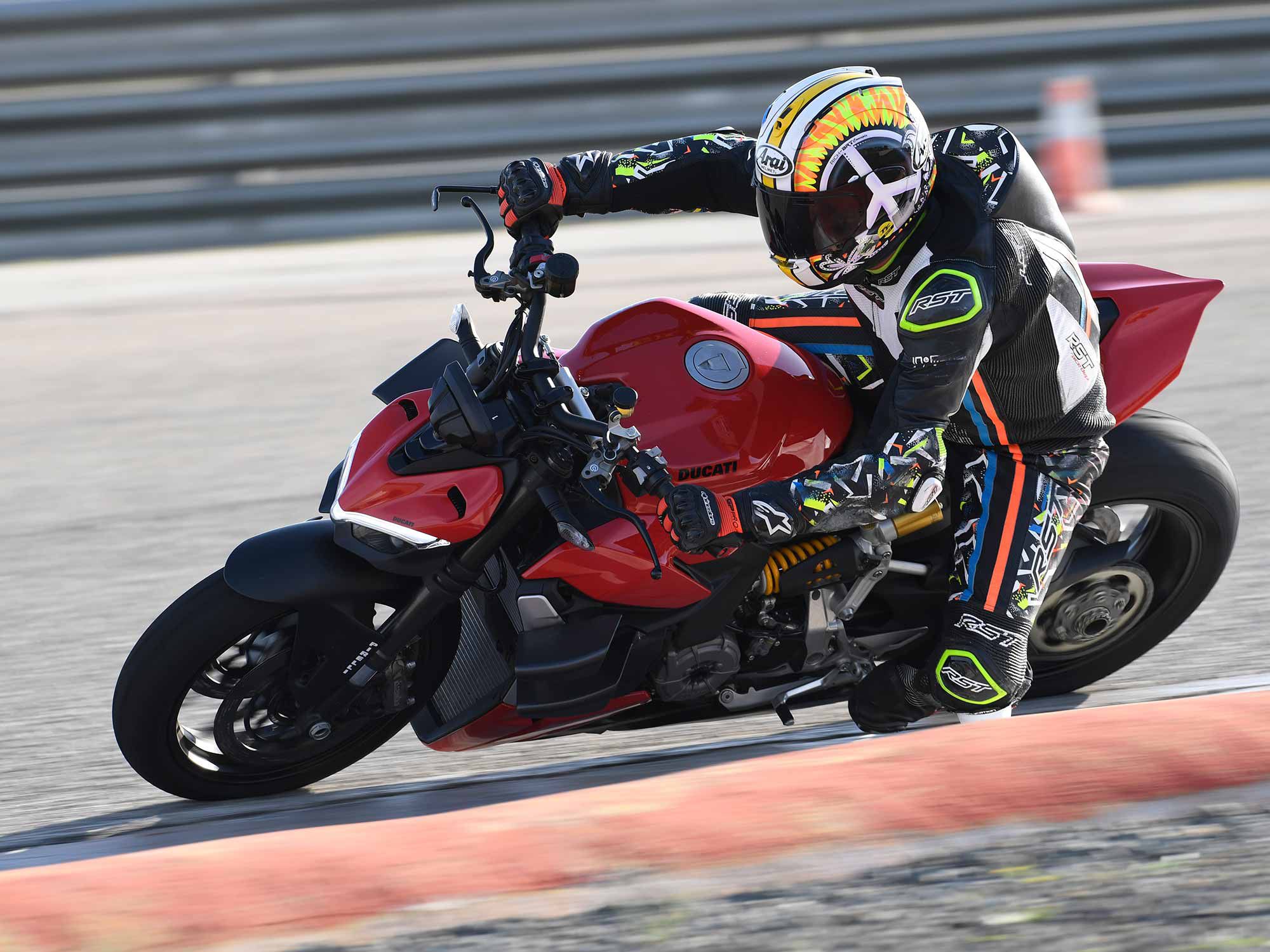
Back on the road, the Brembo stoppers, backed by Bosch cornering ABS, were faultless: powerful with either two- or single-finger braking and always feeling like more than enough.
On track, straight-line braking on smooth surfaces is shockingly good and consistent, and it was only when pushing for a lap time while braking heavily over bumpy sections that I could feel the ABS intervention.
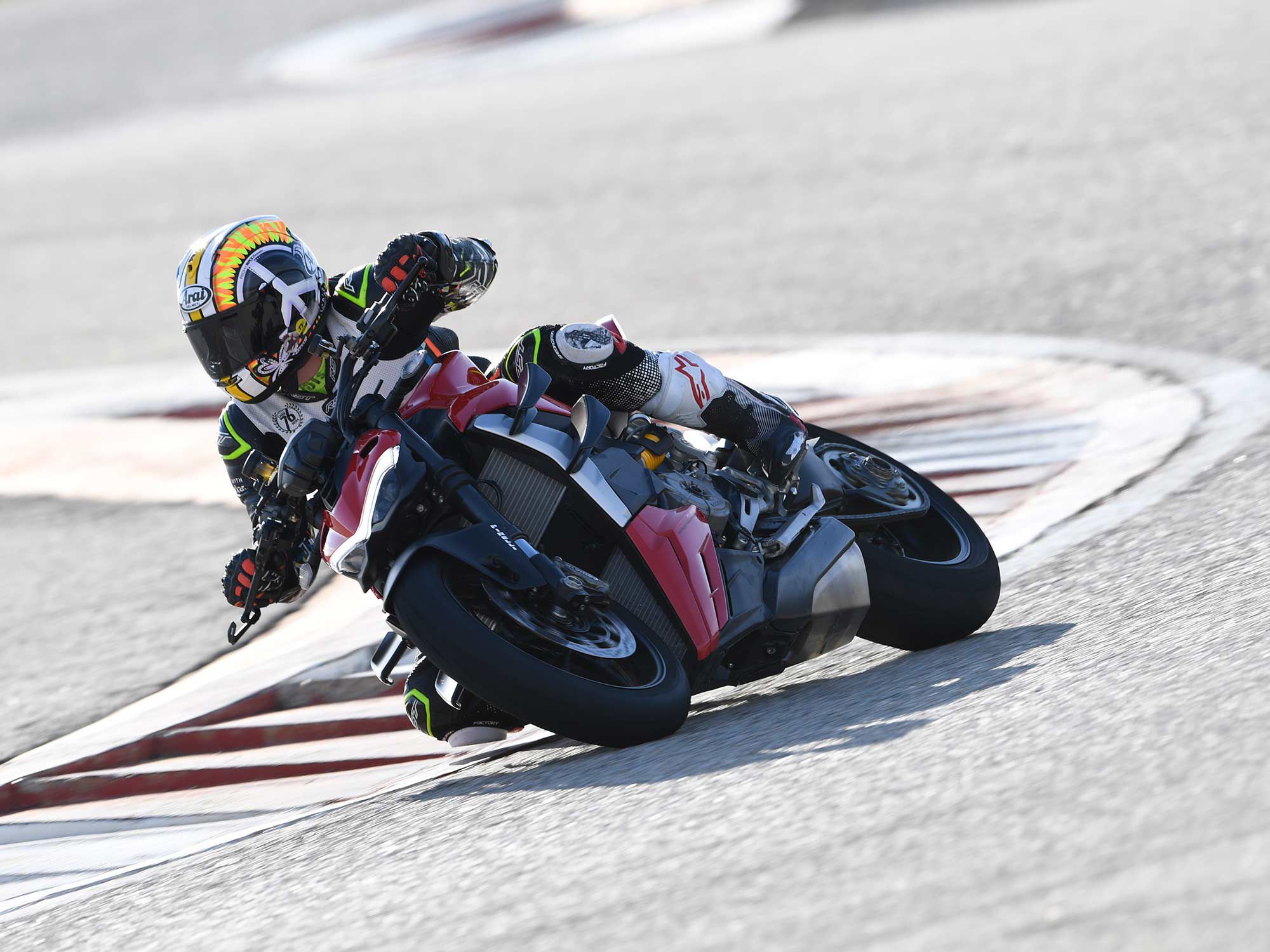
The Streetfighter V2 gives you three riding modes to choose from—Sport, Road, and Wet—with each having unique power characteristics. Sport and Road are full power, 153 hp at 10,750 rpm, with differing throttle response, whereas Wet mode is down to “only” 110 hp. Not only do the modes change the power, but they also interact with multiple lean-sensitive rider aids: DTC (Ducati Traction Control with 0-6 levels), DWC (Ducati Wheelie Control, 0-4), cornering ABS, and EBC Evo (Engine Brake Control, 0-3).
Despite the “Joker face” of the new DRLs and aggressive marketing image created around the Streetfighter brand, the new V2 is actually rather unassuming and easy to live with. The Superquadro engine pulls cleanly from 2,500 rpm, with plenty of midrange torque, which means you don’t need to be dancing up and down on the up-and-down quickshifter. There’s a noticeable step up in power around 6,000 rpm, and it will rev blissfully to the redline should you wish to.
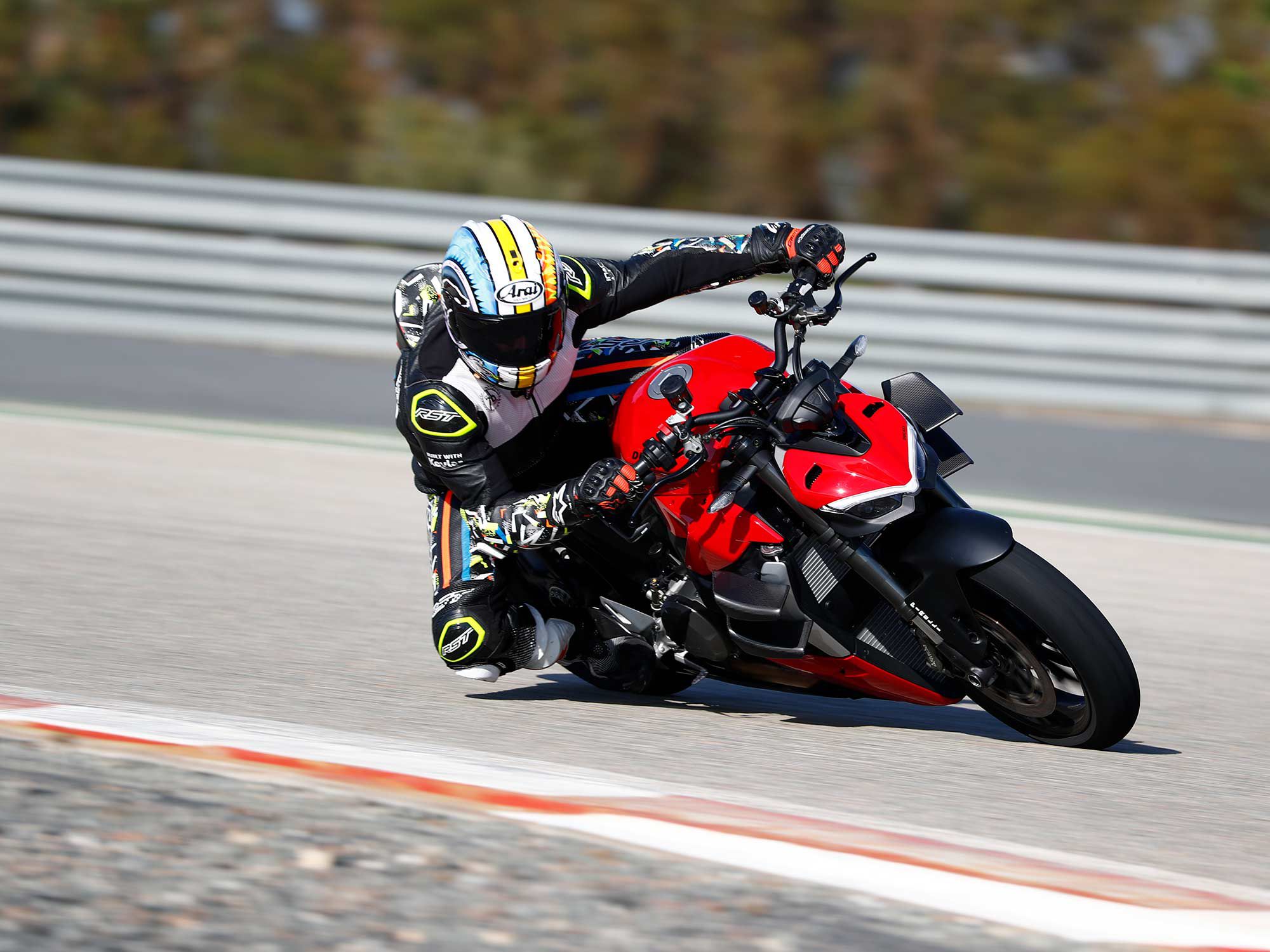
The riding modes aren’t just techy gimmicks, instead there’s a noticeable change to the bike when you switch between them. In Sport mode power delivery is more urgent, the Ducati wants to gallop, and despite some intervention from the TC and anti-wheelie, the front will lift on occasions, if only by a few feet before gently falling again.
The 955cc Superquadro still pushes out over 150 hp, which is more than Carl Fogarty had when he took his first WSBK championship for Ducati. At the end of our test track’s main straight the V2 was indicating 158 mph and still pulling before I was forced to focus on my braking point.
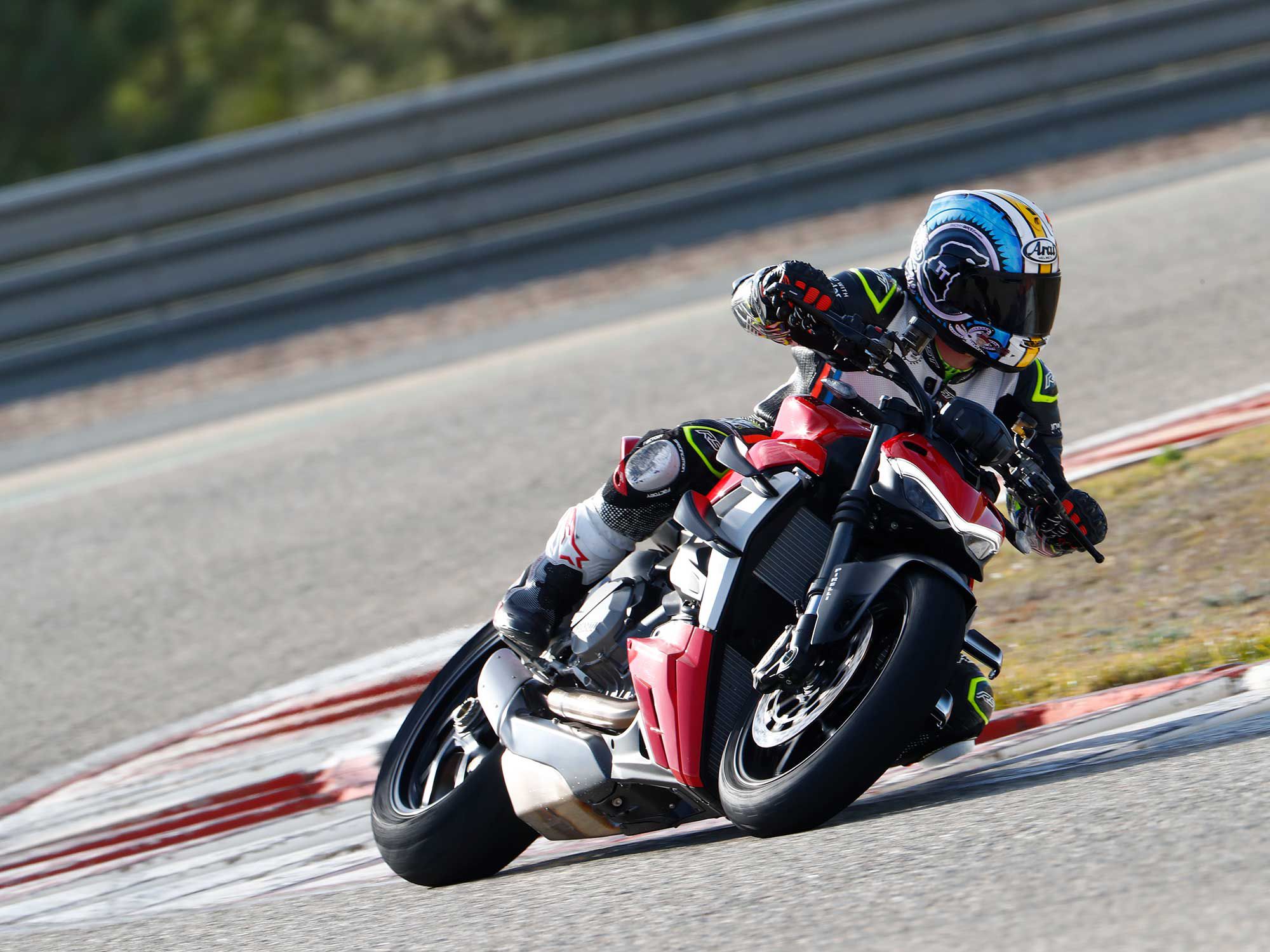
This is a quick motorcycle, whose low-gearing promotes startling acceleration, but also far less daunting than Ducati’s mind-blowing V4 Streetfighter. The V2 delivers a combination of midrange torque and free-revving power that gives great drive out of corners and is equally happy holding on to its revs as it charges north toward its limiter. It doesn’t try to rip your arms from their sockets, but it is quick enough to give your upper body a thorough workout.
The Streetfighter excels as a road bike; in streetbike terms it makes a lot more sense than the sexier Panigale V2. The riding position is obviously more upright than the Pan’, in fact it’s even more upright than the Streetfighter V4. The seat is wider, thicker, and less punishing over a distance than the Panigale, with more room between the seat and pegs, which are a fraction further forward.
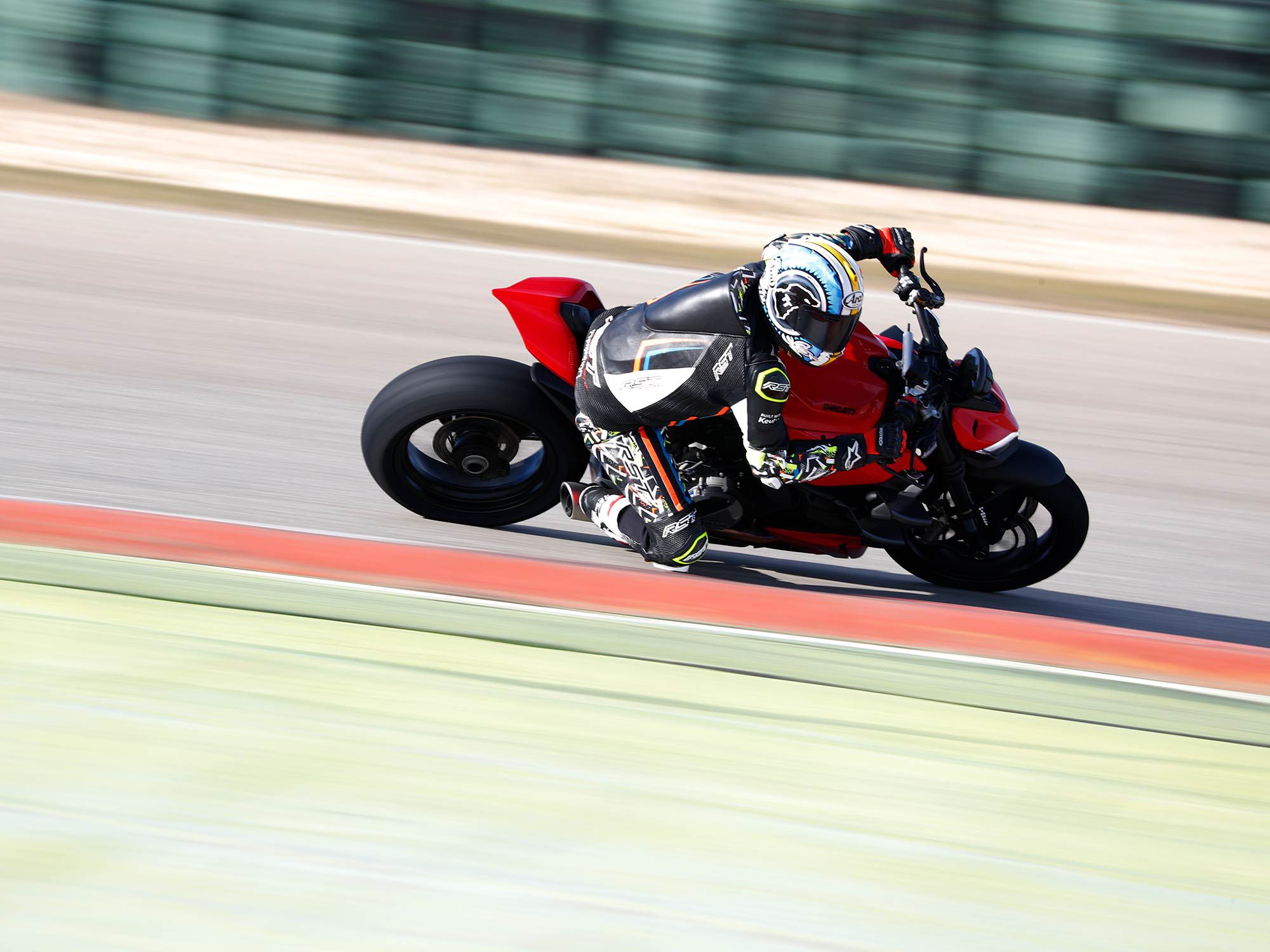
One criticism: The full color 4.3-inch TFT dash is, by modern standards, on the small side, and doesn’t have Bluetooth connectivity. Personally, I don’t mind not having Bluetooth, but I do prefer the full-color clock on the new Multistrada V2.
The Streetfighter V2 is easier to live with, ride, and manage than Ducati’s V4 Streetfighter, and in many ways, for some, will be a better road bike than Ducati’s Panigale V2 too. It’s roomier, comfier, and cheaper, yet you have more or less the same power, rider aids, and chassis. On track, with race rubber, it wouldn’t be dramatically slower than the Pan’ either, and for most riders there wouldn’t be much between the two bikes, however it’s arguably not as desirable as the Panigale.
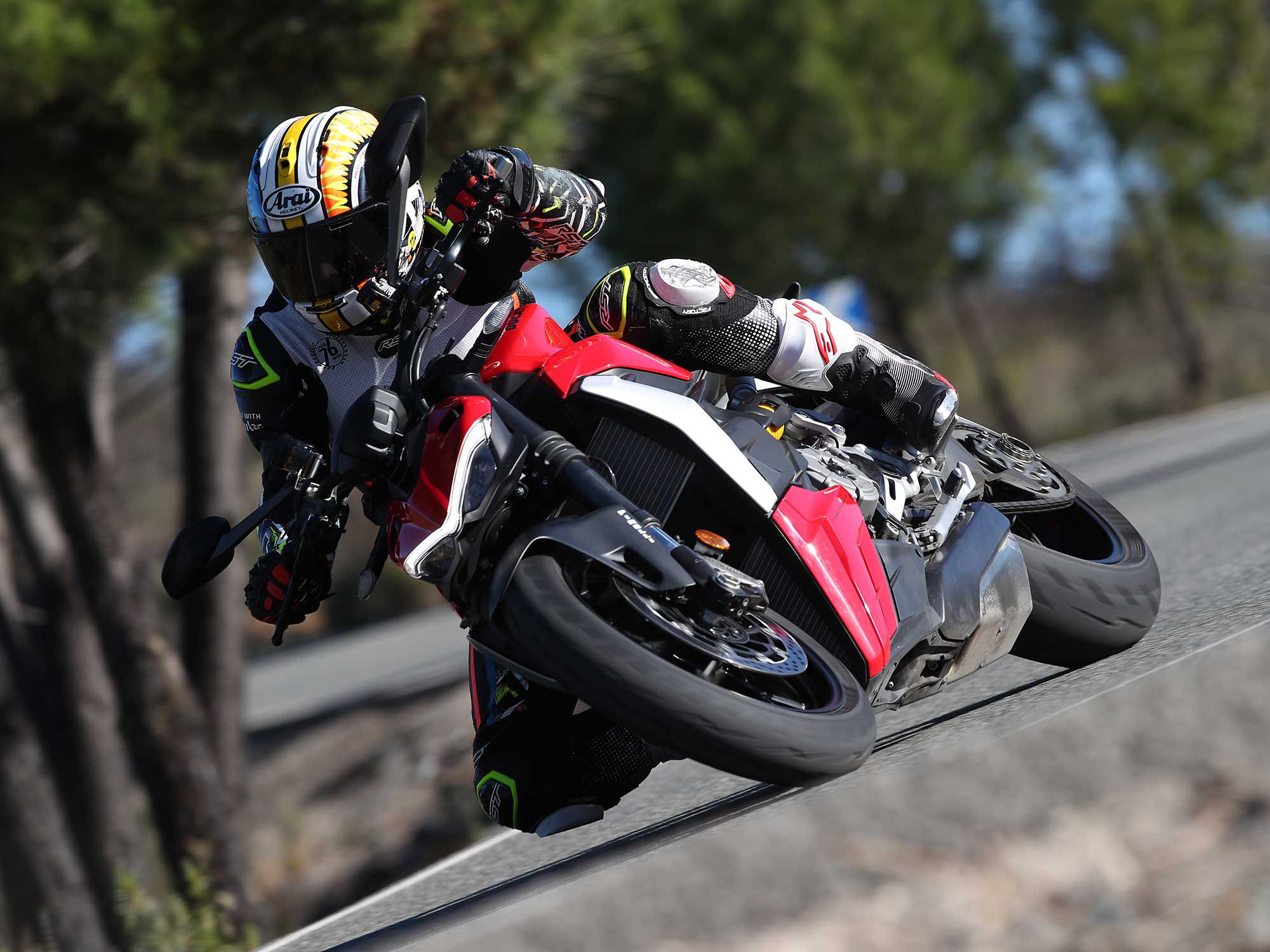
There’s no concealing the fact that it’s pricey, but as a versatile road bike it’s not just impressive when compared to the race-ready Panigale V2. It also sits in that enjoyable space between arm-ripping, track-focused super-nakeds and the cheaper, less exciting, but more usable middleweight naked machines. And that’s a good place to be.
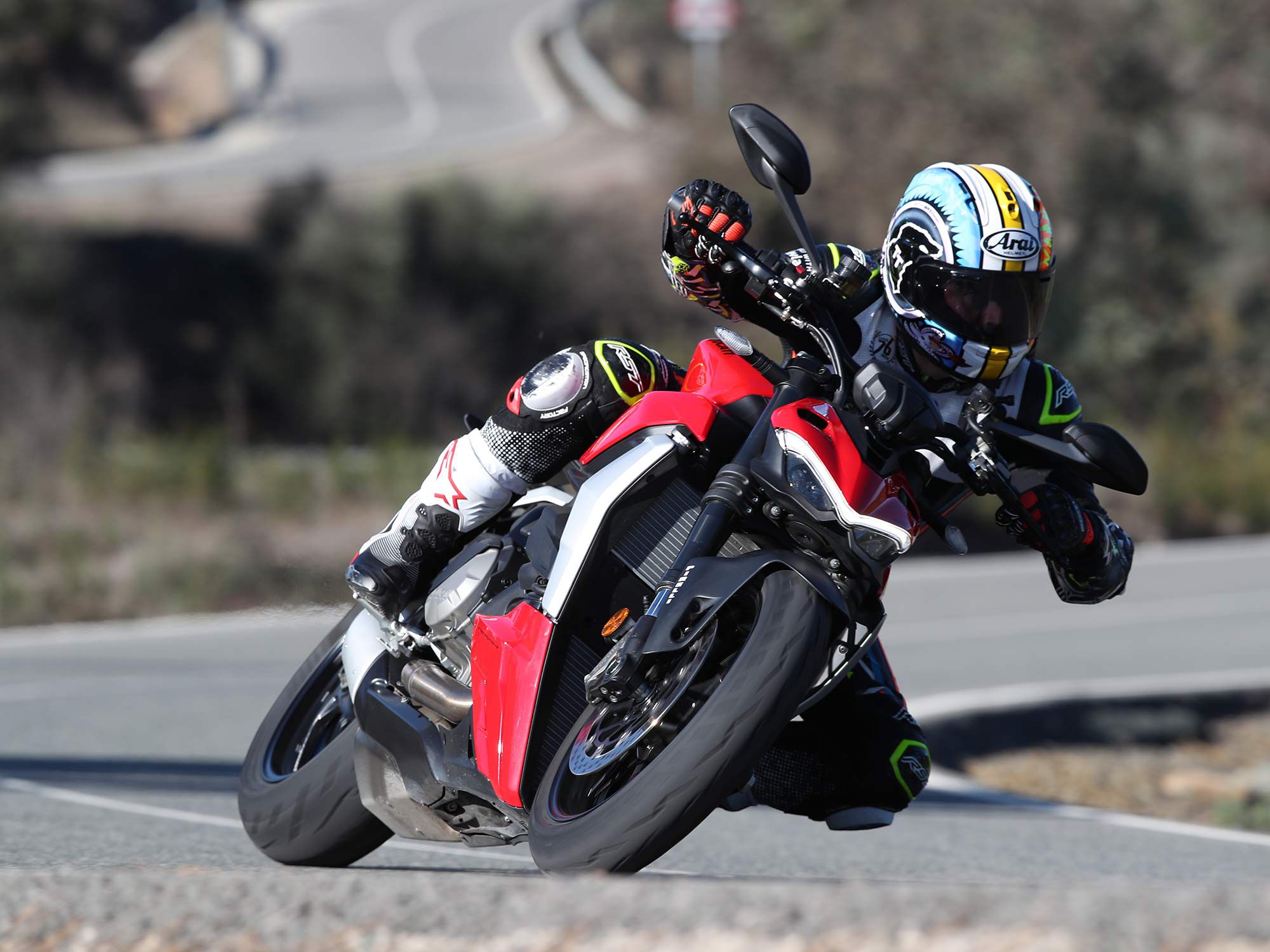
2022 Ducati Streetfighter V2 Specifications
| PRICE | $16,995 |
| ENGINE | 955cc, liquid-cooled, 90-degree twin-cylinder; 4-valves/cyl. |
| BORE x STROKE | 100 x 60.8mm |
| COMPRESSION RATIO | 12.5:1 |
| FUEL DELIVERY | Fuel injection w/ ride-by-wire |
| CLUTCH | Wet, multiplate slipper with self-servo; hydraulically actuated |
| TRANSMISSION/FINAL DRIVE | 6-speed/chain |
| CLAIMED HORSEPOWER | 153 hp @ 10,750 rpm |
| CLAIMED TORQUE | 74.8 lb.-ft. @ 9,000 rpm |
| FRAME | Aluminum monocoque |
| FRONT SUSPENSION | Showa fully adjustable 43mm fork; 4.7 in. travel |
| REAR SUSPENSION | Sachs shock, fully adjustable; 5.1 in. travel |
| FRONT BRAKE | Brembo M4.32 radial 4-piston calipers, 320mm discs w/ cornering ABS |
| REAR BRAKE | 2-piston floating Brembo caliper, 245mm disc w/ cornering ABS |
| WHEELS, FRONT/REAR | Aluminum; 17 x 3.5 in. / 17 x 5.5 in. |
| TIRES, FRONT/REAR | Pirelli Diablo Rosso IV; 120/70-17 / 180/60-17 |
| RAKE/TRAIL | 24.0°/3.7 in. |
| WHEELBASE | 57.7 in. |
| SEAT HEIGHT | 33.3 in. |
| FUEL CAPACITY | 4.5 gal. |
| CLAIMED CURB WEIGHT | 441 lb. |
| WARRANTY | 2 years, unlimited mileage |
| CONTACT | ducati.com |
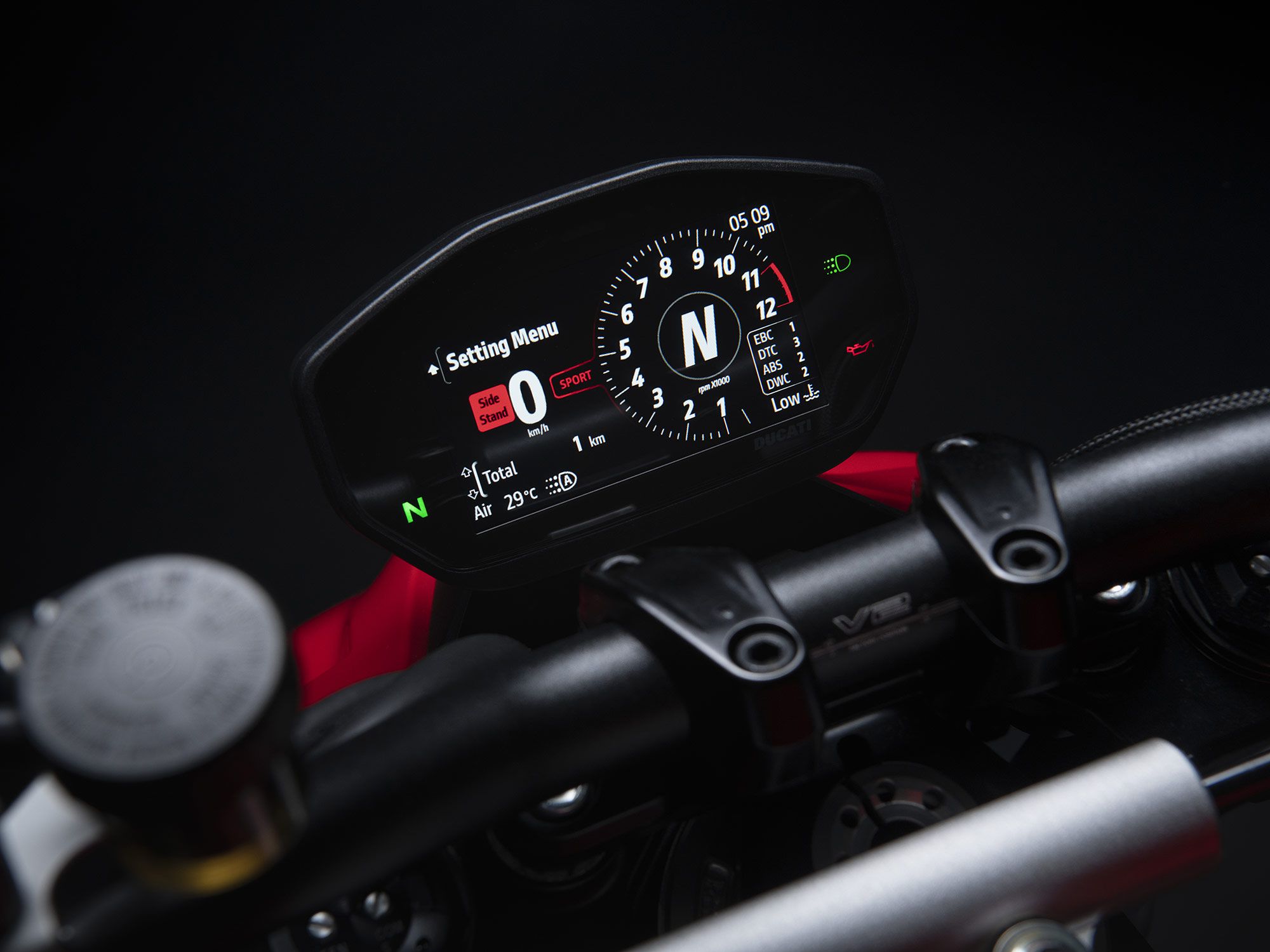
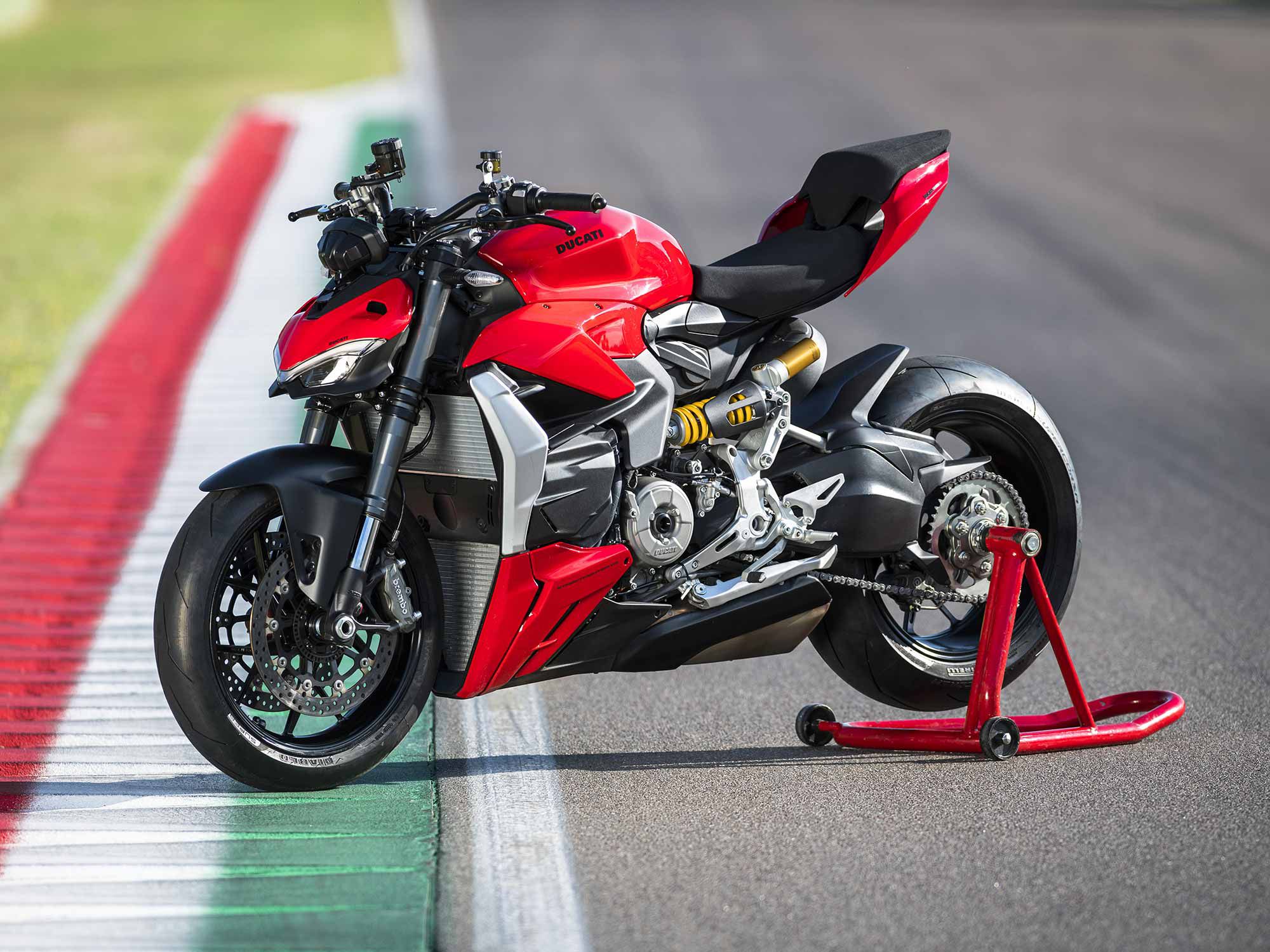
Source: MotorCyclistOnline.com
